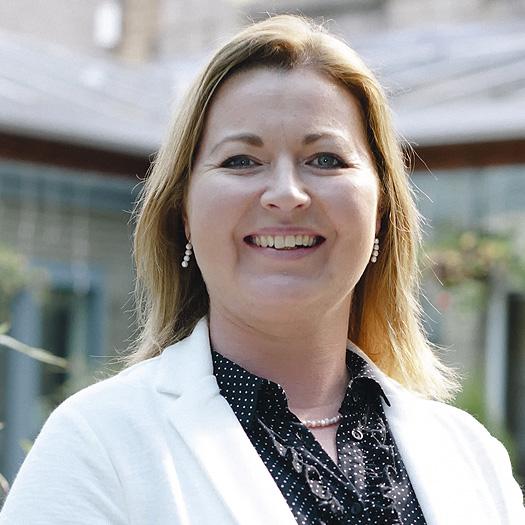
Marja Laurikainen, Karen Van Eylen & Julie Uí Choistealbha
Based on the studies on students’ perspective done in an Erasmus+ funded Empowering Eportfolio Process project, it is evident that students have reached sufficient skills for operating in digital environments regarding learning process’ needs. However, more competences are needed to make contents visual and find the arguments for specific content. Nonetheless, the teachers’ role in guidance is relevant in the ePortfolio process and especially in building up a showcase portfolio (e.g. Kunnari, Laurikainen, & Torseke 2017; Kunnari, Laurikainen, Pires, & Rodrigues 2017). In order for teachers to provide the right kind of guidance for their students, they should understand the benefits of ePortfolio process themselves. Teachers’ own engagement with ePortfolios increases their motivation, which again causes the same kind of reaction of empowerment in their students (Korhonen, Ruhalahti, & Torseke 2017).
This article describes how educational institutes can develop the graduate attributes of their students and make their competences visible in ePortfolios in cooperation with the world of work through internships, placements and real life projects, and how important teachers’ own attitudes and knowledge about ePortfolios is in that process. In addition, it aims to demonstrate how individual teachers themselves as well as educational institutes can benefit from ePortfolios in career management and recruitment processes. Ultimately, this article aims to provide motivational insights for students and companies to use ePortfolios to make competences visible so that it is easier to find better and more suitable employees to match the requirements of the job market.
Methodology
This article is based on and combines the findings from four different semi-structured thematic interviews done in Belgium, Finland and Ireland to educators in higher education context during autumn 2017 and spring 2018. The interviewees are both recruiters and teachers in different educational institutes who have created or been involved with ePortfolios in career management and recruitment processes. The aim of the interviews was to find out how the use of ePortfolios in teacher education can support both the understanding and practices of the newly qualified teachers with their students. In addition, the interviews aimed to find out how ePortfolios can help teachers’ own professional growth and career management, as well as how educational institutes can utilize ePortfolios in their recruitment and competence management processes.
The interviews were conducted between July 2017 and January 2018 and there was a common interview guide that consisted of three themes and assisting questions: 1) Job recruitment setting – interests of the employer, 2) Job recruitment setting on the basis of an ePortfolio – transparency for the working life, and 3) Work life as an actor in supporting the creation of ePortfolios. Each interviewee (introductions in the following chapter) were interviewed individually by one of the authors. The interviews were recorded in video or audio recordings and transcribed afterwards. The data from the interviews were analyzed by using qualitative content analysis. It was used to finding relations between the data and concepts as well as the existing theories. The units of analysis were the participants’ opinions related to the recruitment processes and ePortfolios. The coding categories were based on the data itself, such like Schreirer’s (2012) description of the qualitative content analysis. The common findings are introduced in this paper.
Interviewees
Kristof Demeyere is an Assistant Lecturer in Special Teacher Education of Arts (STE of Arts) at Katholieke Universiteit Leuven. His work as a coordinator includes enrolling the ePortfolio within the curriculum. He also works as a teacher in an adult education centre. In the STE of Arts, there has been a tradition of working with paper portfolios, which was perceived as a learning process portfolio but in fact was more of a huge and unstructured showcase portfolio. By introducing ePortfolios, STE of Arts has been able to focus more on the guidance of the learning process and continuous follow-up of the students.
Lisa Donaldson is a Learning Technologist, Developer of Loop Reflect, a learning portfolio platform, at Dublin City University (DCU). She is currently the Learning Portfolio champion at DCU and is responsible for supporting ePortfolio adoption across all disciplines and contexts. The Loop Reflect is a university-wide ePortfolio system at DCU, using Mahara, integrated with Blackboard. The challenge given to Enovation (service provider company) was to create an online environment that would showcase DCU’s graduate attributes which are: creative and enterprising, solution orientated, effective communicators, globally engaged, active leaders and committed to continuous learning. The introduction of Loop Reflect is still relatively new and thus, there is no real connection to the world of work yet. However, embedding ePortfolios to work placements and careers services will be the next stage of development.
Seija Mahlamäki-Kultanen is the Dean of School of Professional Teacher Education at Häme University of Applied Sciences (HAMK). She has a long career in the development of vocational and higher education, including teacher education. Currently, she is the co-chair of the forum of teacher education reform (teacher education in all levels from early childhood to higher education) with all the teacher education providers in Finland. HAMK School of Professional Teacher Education has provided professional teacher education for over sixty years and during the recent years, it has been in the leading role in many national projects related to the development of teachers’ competences related to different education reforms (e.g. digitalization). At HAMK School of Professional Teacher Education, there is a specific programme for teacher students focusing on digital competences and tools. In this programme, ePortfolios are used systematically as learning spaces and showcases to demonstrate the competences of teacher students throughout the programme.
Amy O’Connor is a Primary School Teacher, a Graduate from BSc in Education Studies & Professional Master in Education (Primary) at Marino Institute of Education (MIE). Amy was part of the first pilot group that trialled the use of ePortfolios in MIE and was introduced to the technology supporting ePortfolios in her Technology for Teaching and Learning module as well as in optional sessions offered by MIE staff. She used her ePortfolio as a mode of assessment for the Studying Teaching module demonstrating the use of multiple perspectives to analyse the understanding and beliefs about teachers and the study of teaching. In the final year at undergraduate level, Amy completed an internship and utilised her portfolio to document the development of workplace competencies, using a multimedia approach. When applying for the Professional Masters in Education (Primary) programme (PME) Amy included a link to her ePortfolio in the application form as she found that the application form provided limited scope for an exploration of educational experience unlike the portfolio. In the PME programme, Amy further developed technological skills in Creative Technology module and completed an ePortfolio during the Advanced School Placement.
Results and analysis
Job recruitment setting – interests of the employer
When looking at the recruitment processes in educational institutes, they are very structured and even legislated by law, especially for tenured positions. The practices differ between the partner countries but in all of them, the processes need to be transparent and precise. When there is the decision for need and the justification for recruitment, often to a demanding expert position, a recruitment advertisement will be drafted based on the competence profile and formal requirements (educational background, work experience, etc.), usually the advertisement will be published in digital platforms, and sometimes newspapers. The applications are reviewed against the competence criteria and formal requirements and certain amount of people are invited to an interview, sometimes there can be a competence demonstration included to the interview to concretize the expertise. Nowadays, the applications are of good quality, thus, it is important to make the application to match the specific criteria, requirements and other information of the available position.
Mahlamäki-Kultanen (2017) describes the competence requirements in the field of education to be manifold, e.g. communication skills, ability to take initiative and follow through processes, courage to present and listen, language skills, having experience and wider insight of education as well as having interest to influence the development of education.
It is important to take into consideration how to demonstrate own competences. Sometimes applicants have difficulties to position themselves against the competence criteria or they do not know how to apply high theoretical knowledge into practice or to different operational areas in educational institutes. (Mahlamäki-Kultanen 2017.)
Mahlamäki-Kultanen (2017) continues that it is challenging to bring out soft skills in an interview situation, or even in competence demonstration. However, if the recruiters are experienced, they can intuitively get a sense of these kind of skills as well.
Job recruitment setting on the basis of an ePortfolio – transparency for the world of work
The higher education institutes behind each interviewee in this article have already included ePortfolios into their learning processes to engage students to their own learning and to make their competences visible and transparent. These educational institutes have used ePortfolios mainly as spaces for students to reflect their learning but are increasingly developing the connection and participation of the world of work. Donaldson (2018) from Dublin City University describes their Loop Reflect as a platform to make learning visible through the creation of a personalised and reflective living showcase of academic, professional, and personal achievements. The challenge is to display the before mentioned DCU’s graduate attributes to boost job prospects and employability.
The connection to the world of work manifests naturally, when ePortfolios are used in work placement or internship framework, to reflect learning and having input and feedback from work place representatives. The learning experiences can be connected to the development of different graduate attributes and subject specific competences making students to become more attractive to the job market.
Demeyere (2017) states that in the field of arts, there are more students graduating than available positions in the job market. O’Connor (2018) describes the same kind of situation existing with teachers in primary school sector and thus, believes that ePortfolio would strengthen the application by making competences visible and enabling it to stand out among the myriad of applications each school receives. The progress of learning made transparent in ePortfolio – the evaluated competences and feedback from peers, teachers, world of work representatives – can replace recommendation letters and ease the transition from being a student to becoming a professional (Demeyere 2017). Mahlamäki-Kultanen (2017) adds that ePortfolios can create added value in the recruitment process, not by itself but together with all the other required application documents, as it allows more creative way to demonstrate competences and skills. But, how to create an ePortfolio that is appealing to recruiters?
The most important factor is that ePortfolios are clearly structured and self-explanatory. O’Connor (2018) describes the primary teaching job application process in Ireland in a way that the applicant should indicate with no more than 150 words, how their experience and skills can assist in the particular post in question. O’Connor found ePortfolio to be an excellent asset to refer to when compiling the application as all of the key experiences and skills had been documented in her portfolio. In addition, Mahlamäki-Kultanen (2017) describes recruiters as persons who often have strong process thinking and the formulation of ePortfolio should support this. Of course there are differences between the fields of industry, e.g. in media field it probably pays off to be creative and individual. However, in the field of education it would be interesting to see in ePortfolios how a teacher behaves as a professional in educational settings such as different learning environments and situations.
Finally, digitalization has changed recruitment processes and channels, which can provide new kinds of opportunities or make it easier to find skilled future employees. Thus, having an appealing professional presence in right kind of channels online can help employees to be spotted by attractive companies, and be employed. Although, in order to make this happen one needs to be aware of what happens in that specific field of business to know what are the platforms those companies are using and following. (Mahlamäki-Kultanen 2017.)
The world of work as an actor in supporting the creation of ePortfolios
To get the full benefit of the ePortfolios, the world of work should somehow be involved in the creation process. For students it is important that they can learn in real life situations from the beginning of their studies in order to reflect their skills and competences against the actual requirements of the world of work. Thus, it is quite natural to use ePortfolios in internship or work placement settings.
The employers should be engaged in giving feedback and recommendations to students in their ePortfolio. In best cases, ePortfolio can also be used as a platform to raise discussion between teachers and employers on competence requirements at today’s workplaces and the relevance of education to the world of work. The comments and insights from the employers can be used to develop education programmes and increase their relevance. (Demeyere 2017; Mahlamäki-Kultanen 2017).
How about the benefit of ePortfolios to companies in this kind of cooperation?
The companies involved in this kind of cooperation with students build up their positive corporate image and reputation by being supportive to students’ learning processes and professional development (Mahlamäki-Kultanen 2017).
The cooperation with educational institutes helps employers to clearly structure the competence requirements in their field or company and make them visible to students, i.e. potential future experts. Further, students wish to be employed in companies where they can learn more and develop their professionalism further. Active cooperation gives positive impression of the company as an employer and the ePortfolios students create during the cooperation can be a gateway to employment. (Mahlamäki-Kultanen 2017.)
Furthermore, ePortfolios can be used in competence management inside the company. In the field of education, it could be beneficial for employers (schools) to see how their teachers progress, what are their competences and special skills and to give them assignments that are best suited with their profile. (Demeyere 2017.) Many employers, also schools, have different kind of official management and leadership systems or tools. However, ePortfolios could have added value because they allow more creative evidence of competences and skills that could be used e.g. during yearly appraisals with supervisors. In addition, many educational institutes have started to use e.g. digital open badges that can be characterized as “miniportfolios”. (Mahlamäki-Kultanen 2017.) Further, O’Connor (2018) says that she often refers back to her ePortfolio as it is essentially a resource bank of teaching methodologies and tools, and displays activities that went well/did not go so well. In Ireland, as part of teachers’ probation process, newly qualified teachers are required to write a summative reflection at the end of each teaching week in which an interactive ePortfolio could be used to link and share between professionals. Overall, ePortfolio can support teachers to critically reflect on both the positive and negative experiences and subsequently use these as a basis to learn and build upon.
Conclusions and discussion
The findings from the research done for this article, as well as from previous research (e.g. Kunnari, Laurikainen, Pires, & Rodrigues 2017), highlight teachers’ role in the ePortfolio process and how important it is that teachers understand the purpose and benefits of ePortfolios for students in today’s, and especially future labour market and recruitment processes. Since many HEIs have been or are starting to implement ePortfolios in their learning processes, many teachers in the beginning of their careers either have been exposed to ePortfolios in their own studies or introduced to them in their current work as a teacher. Thus, teachers can see the benefit of ePortfolios both for students and for themselves in their own career management. As mentioned before in the results, ePortfolio for teachers can be an ever-growing resource bank of methodologies and tools that they can refer to in their professional development and career, and it can be a tool for teachers to reflect their activities, which can also be acquired as a part of the probation process for the newly qualified teachers.
However, it is somewhat surprising that even if HEIs and other educational institutes are increasingly using ePortfolios with their students, the use of them in recruitment of teachers is still relatively scarce. It may be because of the recruitment in the field of education is rather structured and legislated – teacher’s job is a public tenured position, often administrated by the municipality or other regional governmental public body. It is perhaps not very common in public positions that an appealing online presence in some specific platforms or highly creative approaches in recruitment would result in employment. Nevertheless, a clearly structured ePortfolio could ease the demonstration of manifold competence requirements of teachers, and since a teacher’s profession is often much competed one (at least in many European countries), an ePortfolio could ease applicants to better stand out from others by linking their application to their ePortfolios with all the key experiences, skills and competences. Seeing examples from real professional settings, different learning environments and situations, could bring added value and give the employer a better understanding of the applicant. In addition, in some countries (for example Finland), teachers are rather autonomous and taking ePortfolios alongside with e.g. yearly appraisals could be beneficial for HEIs and schools, as they would then see how their teachers progress, what are their competences and specific skills and what kind of tasks they could have in the future. Further, even if teachers are required to make reports of their work, a simple report is perhaps not as demonstrative as an ePortfolio can be.
It is no surprise that having good connections to HEIs is beneficial for companies and employers when thinking about their need for future employees. Even for HEIs themselves and other schools, it is crucial to get competent and inspired teachers as their staff. The cooperation with potential future employees build up positive employer image and reputation, which then attract the best applicants. Further, it gives employers the possibility to influence what kind of competences and skills those future employees could have. In the best scenario, ePortfolios could be the channels to raise discussion between teachers and employers on the relevance of education to the world of work in the future.

This article was produced in the Erasmus+ (KA2 action) funded project “Empowering Eportfolio Process (EEP)”. The beneficiary in the project is Häme University of Applied Sciences (FI) and the partners are VIA University College (DK), Katholieke Universiteit KU Leuven (BE), University College Leuven-Limburg (BE), Polytechnic Institute of Setúbal (PT) and Marino Institute of Education (IE). The project was implementated during 1.9.2016–30.11.2018.
Authors

Marja Laurikainen, MBA, Project coordinator, Empowering Eportfolio Process – Education Development Specialist (Global Education). She currently works in global education services designing and coordinating tailored education programmes, creating cooperation and research networks with regional experts and companies.

Karen Van Eylen, MsC, currently works as an educational technologist at the Educational Development Unit at KU Leuven. She advises and assists teaching staff and educational developers concerning appropriate technologies for education. Evidence-based research is an important starting point for this support. Her work focuses on e-assessment, formative assessment and digital tools; technology in collaborative learning and service-learning.

Julie Uí Choistealbha, PhD (Ed.), works in Marino Institute of Education as Lecturer in education in the School Placement Department, Coordinator of the BSc in Education Studies programme. She teaches on the advanced professional studies module, the second language teaching and learning specialism and works with students in advance of school placement, work placement and internship. Her research interests include work-based learning for students of education, the assessment of work-based learning, the use of ePortfolios in competency-based assessment, the final year curriculum design of a professionally-orientated degree and working in partnership with schools on practicum design. She is a Trinity College Research Fellow in the School of Education’s Research in School Education (RISE) research group.
References
Barrett, H. (2010). Balancing the Two Faces of ePortfolios. Educação, Formação & Tecnologias 3(1), 6–14. Retrieved 12 December 2017 from http://eft.educom.pt/index.php/eft/article/viewFile/161/102http://eft.educom.pt/index.php/eft/article/viewFile/161/102
Demeyere, K. (2017). Assistant lecturer, Teacher education of Arts, Katholieke Universiteit Leuven. Interview 13.07.2017.
Donaldson, L. (2018). Learning Technologist, Loop Reflect, Dublin City University. Interview 13.12.2017.
Korhonen, A-M., Ruhalahti, S., & Torseke, J. (2017). How to put all my knowledge into words? In I. Kunnari & M. Laurikainen (eds.) Students’ perspectives in ePortfolios. HAMK Unlimited Journal 13.12.2017. Retrieved 17.5.2018 from https://unlimited.hamk.fi/ammatillinen-osaaminen-ja-opetus/how-to-put-all-my-knowledge-into-words
Kunnari, I., Laurikainen, M., & Torseke, J. (2017). Triggering students to create ePortfolios. In I. Kunnari & M. Laurikainen (eds.) Students’ perspectives in ePortfolios. HAMK Unlimited Journal 15.12.2017. Retrieved 17.5.2018 from https://unlimited.hamk.fi/ammatillinen-osaaminen-ja-opetus/triggering-students-to-create-eportfolios
Kunnari, I., Laurikainen, M., Pires, A. L. D. O., & Rodrigues, M. D. R. (2017). Supporting students’ ePortfolio process in Higher Education. In I. Kunnari & M. Laurikainen (eds.) Students’ perspectives in ePortfolios. HAMK Unlimited Journal. Retrieved 20 February 2018 from https://unlimited.hamk.fi/ammatillinen-osaaminen-ja-opetus/supporting-students-eportfolio-process-in-higher-education
Mahlamäki-Kultanen, S. (2017). Dean, School of Professional Teacher Education, Häme University of Applied Sciences. Interview 15.08.2017.
McCabe, M. B. (2017). Social media marketing strategies for career advancement: An analysis of LinkedIn. Journal of Business and Behavioral Science, 29(1), 85–99.
Mirrer, K. (2010). Designing new technologies to expand knowledge and information sharing in internship and experiential learning settings. International Journal of Technology, Knowledge & Society, 6(4), 121–135.
Okoro, E. A., Washington, M. C., & Cardon, P. W. (2011). Eportfolios in business communication courses as tools for employment. Business Communication Quarterly, 74(3), 347–351.
O´Connor, A. (2018). Primary School Teacher, Marino Institute of Education Graduate. Interview 30.01.2018.
Schawbel, D. (2011). 5 reasons why your online presence will replace your resume in 10 years. Forbes. Retrieved 14.5. 2018 from https://www.forbes.com/sites/danschawbel/2011/02/21/5-reasons-why-your-online-presence-will-replace-your-resume-in-10-years/#4e685dfe6069
Schreirer, M. (2012). Qualitative content analysis in practice. London: Sage.
Trilling, B., & Fadel, C. (2009). 21st century skills: Learning for life in our times. John Wiley & Sons.
Worley, R. B. (2011). ePortfolios examined: Tools for exhibit and evaluation. Business Communication Quarterly, 74, 330–332. Retrieved 18 September 2018 from https://doi.org/10.1177/1080569911414558





